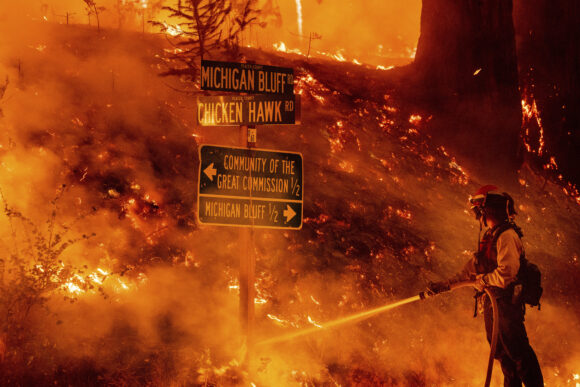The federal government announced that additional $100 million of Inflation Reduction Act funding will be allocated toward 21 high-risk landscapes the Agriculture Department has identified as priorities.
The total will include $400 million in funds from the Inflation Reduction Act (IRA) and Bipartisan Infrastructure Law (BIL) that will go through a competitive internal process under the Collaborative Wildfire Risk Reduction Program to expand work outside the 21 designated Wildfire Crisis Strategy landscapes, focusing on work with non-traditional partners that represent underserved and minority-based communities to help with project implementation.
The program will be funded by Inflation Reduction Act hazardous fuels dollars, which must be used on National Forest System land in the Wildland Urban Interface, where national forests meet homes and communities.
There are 24 states that meet the criteria for this program, including 13 states in the South, Midwest and East. Criteria for eligible areas/projects in these qualifying states include: areas outside the 21 wildfire crisis landscapes on National Forest System lands that meet the Healthy Forest Restoration Act – Wildland-Urban Interface that are within high-risk firesheds identified in the Forest Service Wildfire Crisis Strategy and/or areas with very high wildfire hazard potential.
The 24 qualifying states are: Arizona, Arkansas, California, Colorado, Florida, Idaho, Kentucky, Michigan, Minnesota, Mississippi, Montana, Nebraska, Nevada, New Mexico, North Carolina, Oklahoma, Oregon, South Carolina, South Dakota, Tennessee, Utah, Virginia, Washington and Wyoming.
Was this article valuable?
Here are more articles you may enjoy.


 Coming Soon to Florida: New State-Fed Program to Elevate Homes in Flood Zones
Coming Soon to Florida: New State-Fed Program to Elevate Homes in Flood Zones  Jane Street-Millennium Trade Secrets Fight Ends in Settlement
Jane Street-Millennium Trade Secrets Fight Ends in Settlement  Nearly 1,000 Feared Dead After Cyclone Hits France’s Mayotte
Nearly 1,000 Feared Dead After Cyclone Hits France’s Mayotte  Amazon Ignored Its Own Worker Safety Studies, Senate Report Says
Amazon Ignored Its Own Worker Safety Studies, Senate Report Says 